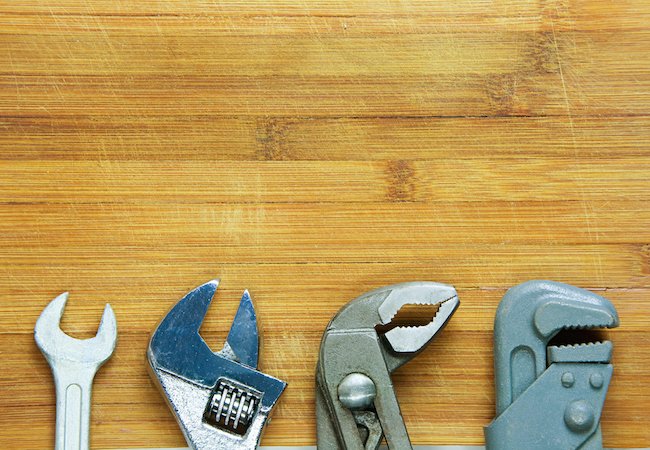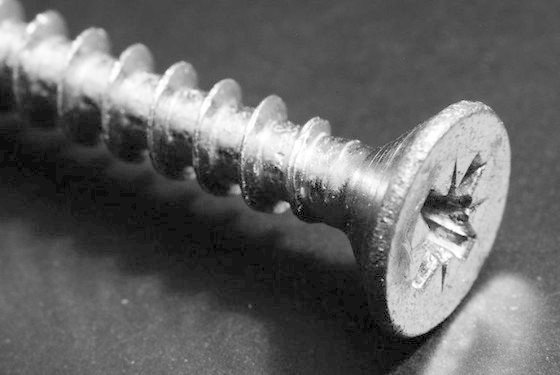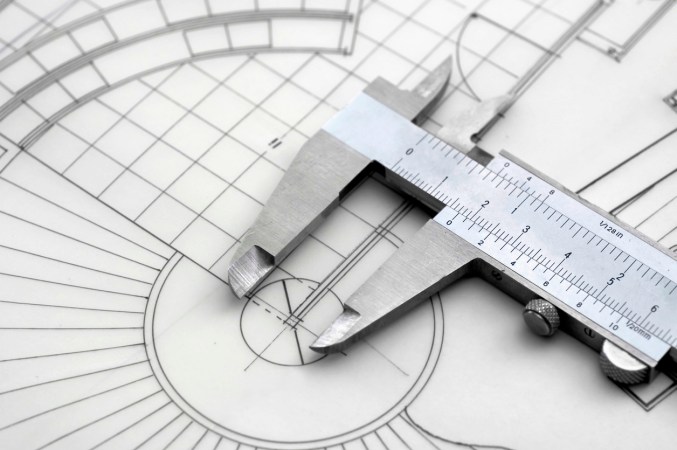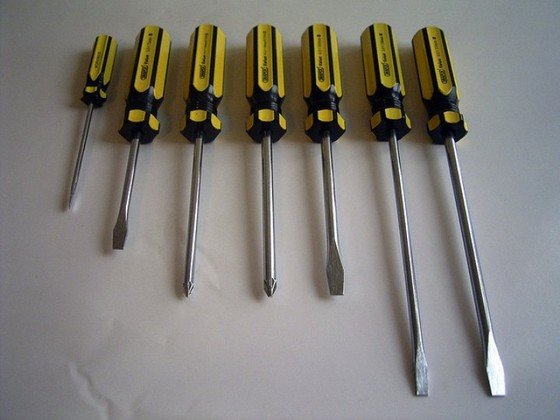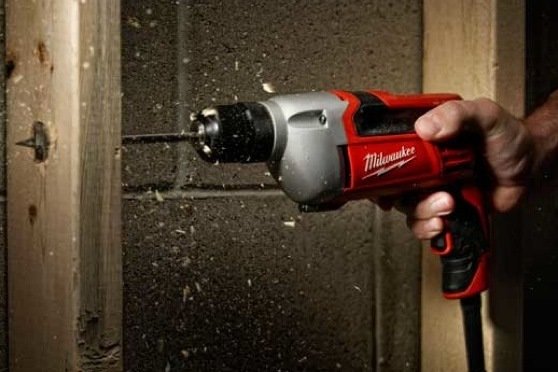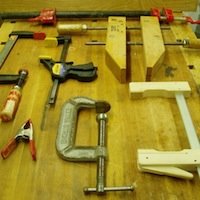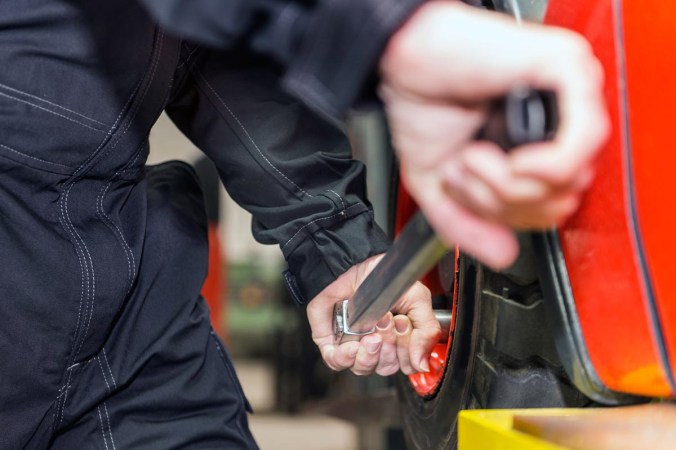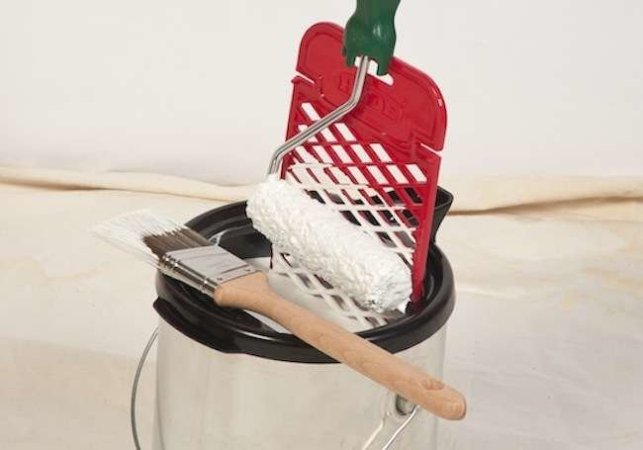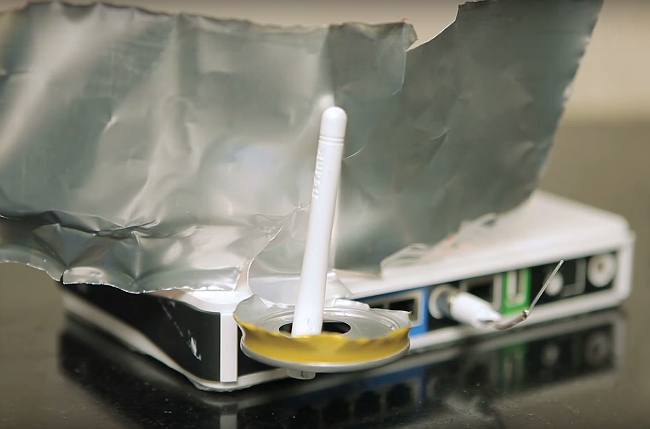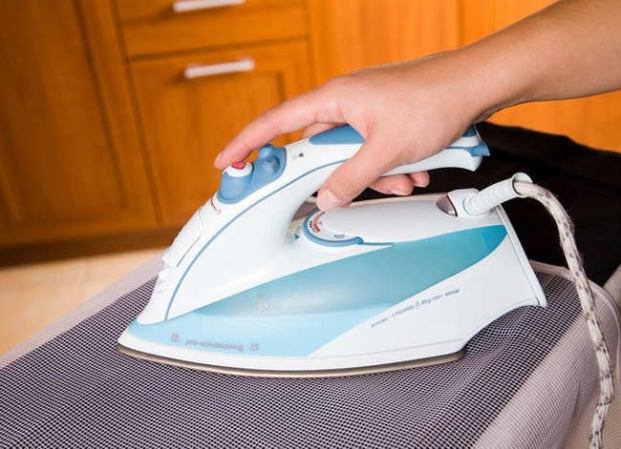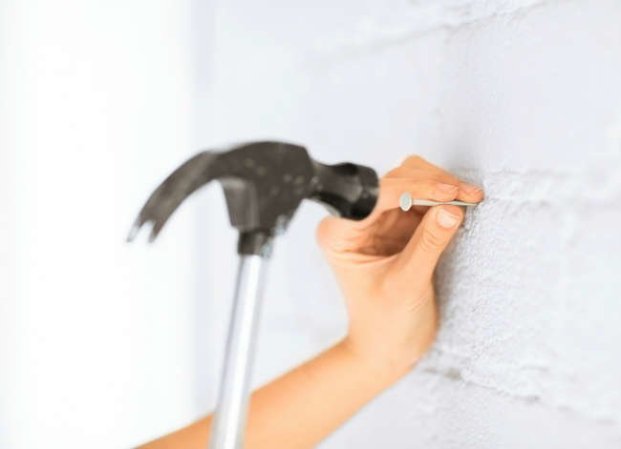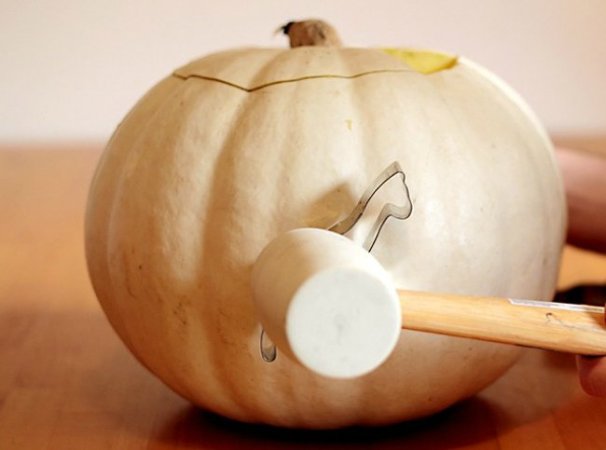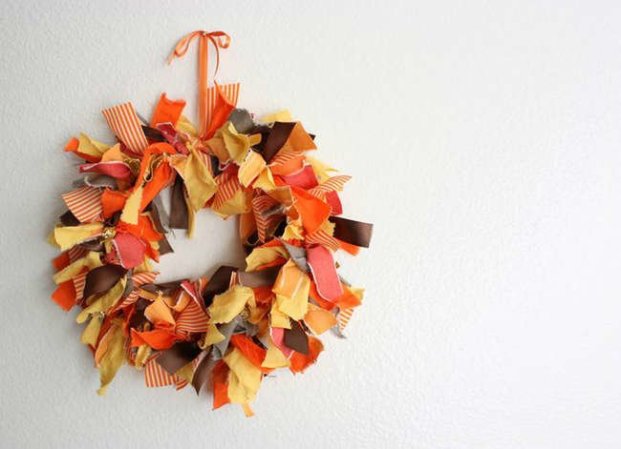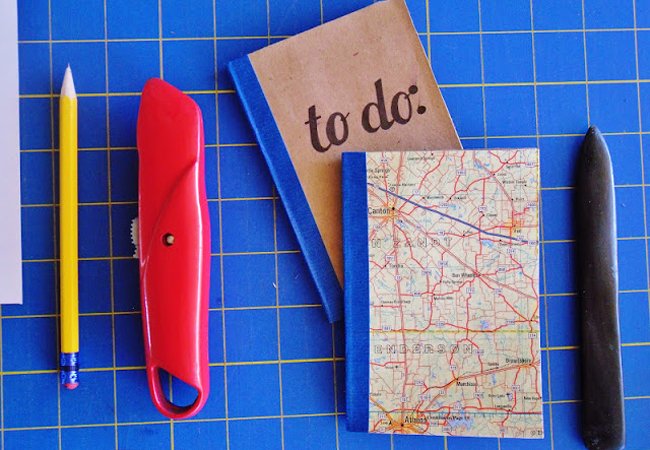We may earn revenue from the products available on this page and participate in affiliate programs. Learn More ›
If you’ve ever tried to remove a stuck nut with a pair of pliers in a pinch, you know how easy it is to scrape and damage the nut’s outside edges with the wrong tool for the job. Do enough damage, and the fastener will be nearly impossible to budge, even when you break out the right tool. Fortunately, for all sizes of nuts and bolts, there are certain types of wrenches that fit snugly and—by exerting pressure on the wrench handle—can safely increase the torque (the twisting force) necessary to either tighten or loosen the nut. Read on to decipher which types of wrenches would be best suited to your day-to-day projects and which you should stock in your home’s toolbox ASAP.
SHOPPING TIPS
One of the first things you’ll notice when shopping for wrenches is that two different measurement standards are used in stores: metric measurements (millimeters) and—the American standard equivalent (inches), named for the Society of Automotive Engineers (SAE). The latter are sized in 1/16-inch increments. With either system, the units are used to measure the nut or bolt that will be twisted.
Most wrench handles range from 5 inches to 2 feet long. The longer the handle, the greater the torque force the wrench can apply to the nut or bolt. Long handles can be unwieldy in tight spots, though, so the best wrench length will depend on the task at hand.
Often, the best way to purchase wrenches is in sets that include graduated-size openings, so that you have the correct tools on hand for whatever project lands on your to-do list. And, if you will be using the wrenches frequently, it’s a good idea to invest in quality—strong, specialty tools manufactured from an alloy significantly stronger than sheet metal. Since a set of precision wrenches matching this description can retail for more than $300, you can rest easy knowing that nearly every size wrench, both SAE and metric, is also available individually. If you’re not ready to invest in a large set, or if your set doesn’t contain the specific size you need, you can purchase a single wrench for the next immediate project.
THE 10 WRENCHES WORTH KNOWING (AND STOCKING)
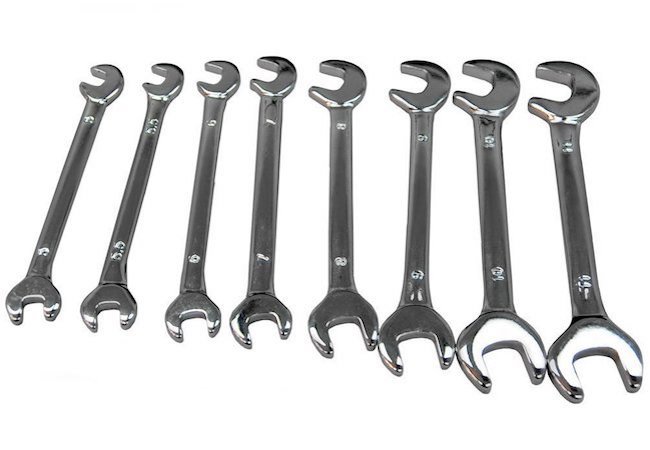
WRENCH TYPE: Open-end Wrench
No DIY toolbox is complete without at least a handful of open-end wrenches. One or both ends on this hand tool feature flat interior C-shaped jaws—and if both wrench heads are open, they’ll be of different sizes—that slip snugly along the sides of a nut or bolt, allowing you to exert torque pressure in either direction. After each turn of the nut, you must reposition an open-end wrench before turning again.
Best For: Narrow spots where you only have access to the side of the nut. If you don’t have enough room to slip a box-end wrench (see below) over the top of a nut, an open-end wrench is your best option. For a good starter set, try Zenith Industries’ Double Open End Wrench Set ($12.99 for an 8-piece set from Amazon).
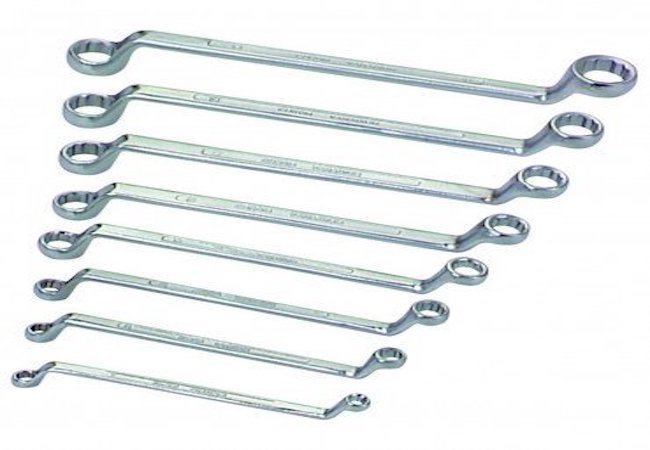
WRENCH TYPE: Box-end Wrench
For tasks in which you have full access to the top of a nut, a box wrench offers more control over the torque process than its open-end counterpart. That’s because once the wrench head is securely positioned over the nut, it’s less likely to slip off. Whether you purchase a single or double-box wrench (which pairs two different size wrench heads), the box ends resemble rings with interior shapes featuring either six or 12 sides. The openings fit snugly over hex-head (six-sided) nuts and bolts. Box-end wrenches with 12-sided rings fit hex-head nuts in the same manner, but offer greater flexibility in handle positioning when fitting the wrench head over the nut or bolt—extremely helpful if you have limited space to maneuver. Some box wrenches on the market even come with offset handles, reducing the risk of scraping knuckles when tightening nuts on flat surfaces.
Best For: Around the house and automotive use. Like open-end wrenches, box-end wrenches are non-adjustable, so it’s a good idea to start with a standard set like this 8-Piece SAE Offset Box Wrench set ($24.95 from Amazon), and then add additional larger and smaller wrenches to your collection over time.
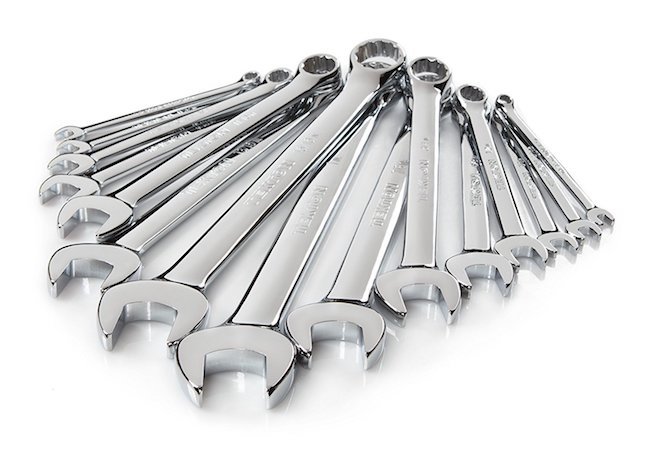
WRENCH TYPE: Combination Wrench
With a combination wrench you get the best of both open-end and box-end wrenches. Unlike how double open-end and double box-end wrenches feature different size wrench heads at each end, a combination wrench has the same head size on both ends, so you can flip the wrench around while you work—both ends will fit the same nut.
Best For: Again, around the house and automotive use. Also, a great wrench to stow in a bicycle bag for roadside repairs. Check out TEKTON’s 15-piece wrench set, which comes with a handy snap-on storage holder ($36.11 from Amazon).
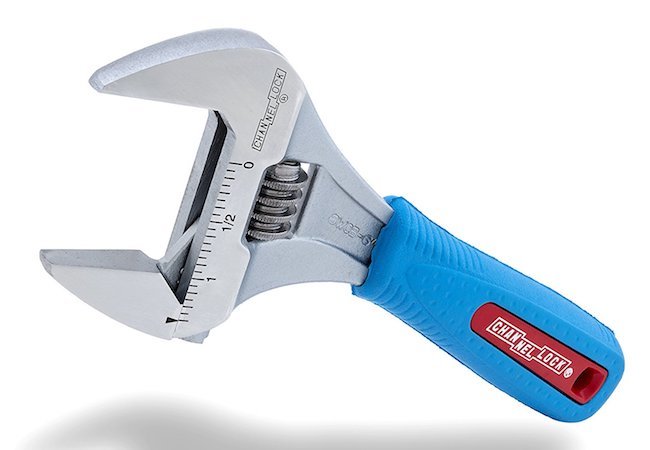
WRENCH TYPE: Adjustable Wrench
Arguably, if you only have one wrench, it should be an adjustable wrench because you can use it on many different sizes of nuts and bolts. But, though undeniably versatile, these wrenches require extra care during use.
In the DIY industry, an adjustable wrench is sometimes called a “knuckle buster” due to its tendency to slip off a nut and—if you’re exerting a lot of force—send your fist flying into something hard or sharp nearby. You can minimize knuckle injuries by remembering to pull the handle of the wrench toward you rather than push it away. Also rotate the wrench’s adjustment screw in order to clamp the wrench jaws as tightly as possible around the nut you’re working on, and readjust as necessary while you work. The jaws on some adjustable wrenches tend to loosen as you work, increasing the risk of slipping and damaging the edges of the nut or bolt.
Best For: Basic plumbing use, including tightening water supply line nuts, or when you can’t locate a non-adjustable wrench in a specific size. Unlike other types of wrenches, adjustable wrenches are sold individually more often than as a set. We like Channellock’s WideAzz Adjustable Wrench with comfort grip ($18.88 from Amazon).
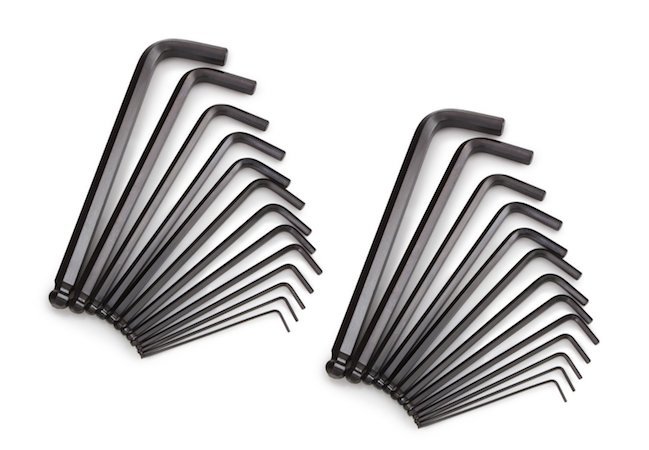
WRENCH TYPE: Hex-Key Wrench
Also called Allen wrenches (although “Allen” actually refers to specific brand known for making hex-key wrenches), these short six-sided bars of steel are characteristically L-shaped, with one side shorter than the other. Rather than wrapping around hex-head nuts like most of the other wrenches in this guide, these turn them by snugly fitting into the six-sided depression at center of each nut. Both ends fit the same size hex-head nut, up to about 3/8-inch for use in household applications and larger only for more industrial work. After inserting one end of the hex-key wrench into a hex-head nut, the other end of the wrench is used as a handle to turn the nut. “Cheater bars,” or small tubes that slip over the end of the wrench handle, can create a longer handle and provide increased leverage when the nuts are stuck.
Best For: Installing and removing recessed hex-head nuts and bolts found in faucets, towel bars, and door knobs. They’re also used for assembling certain types of furniture, bookcases, and closet organizers. Typically, if you purchase an item requiring assembly, the exact hex-key wrench you need will be included, but it never hurts to keep a set of these wrenches like TEKTON’s 26-piece Long-Arm, Ball-end Hex-Key Wrench Set on hand for everyday use ($14.95 from Amazon).
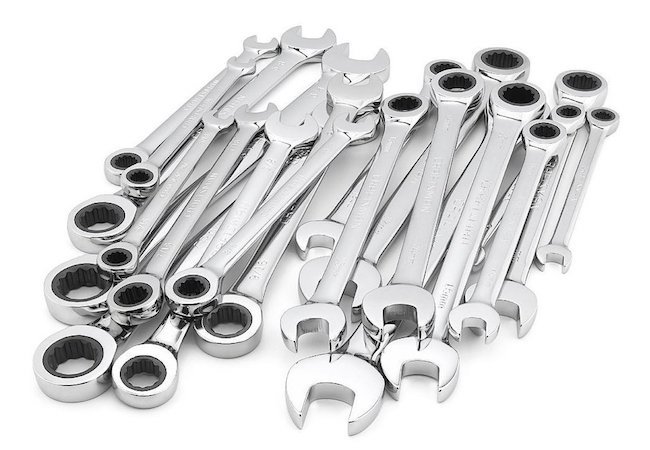
WRENCH TYPE: Ratcheting Wrench
While a ratcheting wrench closely resembles the box-end wrench with one or two closed-heads, its function is wholly different. Once slipped over a nut or bolt, the ratcheting (grab-and-slip) assembly in the head grips the nut tightly when the wrench handle is pulled in one direction but not in the other, so that you can loosen or tighten a nut by simply moving the ratcheting handle back and forth—no need to reposition it after each turn.
Best For: Getting the job done quickly! A ratcheting wrench can be used in any situation where you might otherwise use a box-end wrench. If you have a lot of nuts or bolts to tighten, a ratcheting wrench will greatly reduce the time it takes to do so. Consider investing in a set like the Craftsman’ 20-piece Ratcheting Wrench Set, which offers a ratcheting head on one end of each wrench and an open wrench end on the other of the same size ($62 from Amazon).
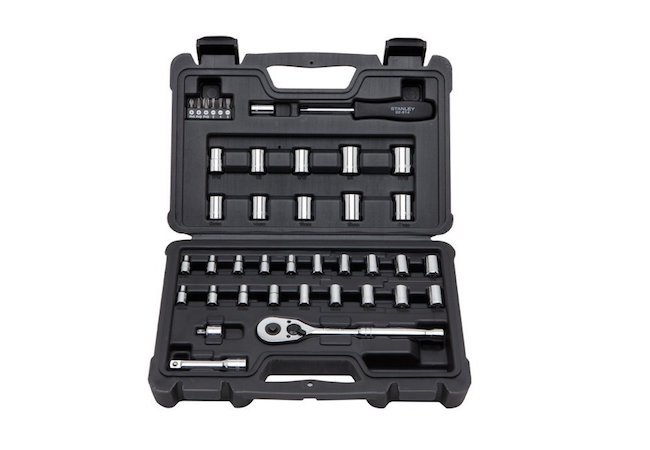
WRENCH TYPE: Socket Wrench
A socket wrench works on the same principle as a ratcheting wrench, but instead of needing an individual wrench specific to each size of nut or bolt, a socket wrench features a single ratchet bar and interchangeable sockets (heads that fit directly over the nuts). For this reason, socket wrenches sell primarily in sets, although you can pick up individual replacement sockets when one gets lost. Depending on the brand, your set might also come with one or more extension bars—handy for reaching nuts and bolts in tight spots. The ratcheting part of a socket wrench is located in its handle; once a socket is fitted over a nut or bolt, tighten or loosen the nut by moving the handle back and forth in the same way you would move a ratcheting wrench.
Best For: Automotive and bicycle use. Many socket wrench sets come in metric sizes designed to fit nuts and bolts on imported automobiles, but they are also available in SAE measurements. Consider picking up one that coordinates with your car—Stanley makes a good 40-piece starter set—and store it in the trunk for quick repairs ($19.97 from Amazon).
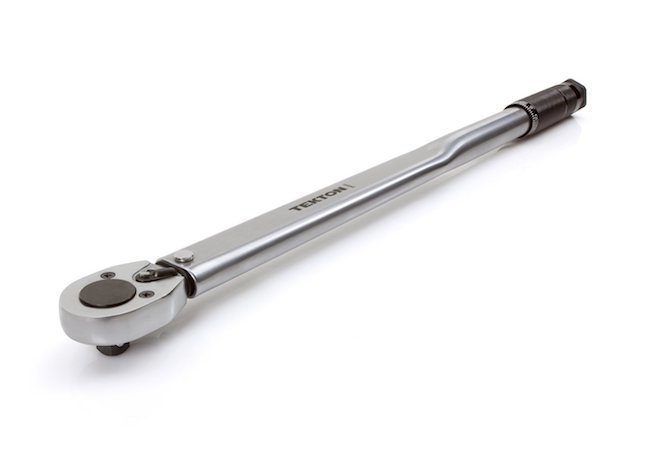
WRENCH TYPE: Torque Wrench
With other wrenches, you can tighten a nut until it feels snug, but in special situations, that’s not good enough—you can’t afford to guess. The torque wrench will tighten a nut or bolt to a specific pressure. Torque wrenches sell individually and are used most often in an automotive setting. A single torque wrench is designed to fit a specific nut or bolt, but more importantly, it’s designed to tighten it to predetermined specs. For example, if you’re changing a tire on a late model car, the lug nuts that hold the wheel in place must be tightened to a specific pressure, measured in “pound/feet.” The car owner’s manual will specify both the size of the wrench head and the amount of torque pressure required to tighten these lug nuts, which DIYers can match to the exact torque pressure listed on the wrench packaging. When tightening a nut or bolt with a torque wrench, you’ll either hear a clicking sound or see LED readout, a scale, or a flashing light to alert you when you’ve reached the correct tightening pressure; tightening past this point will likely damage the nut or the object connected to it.
Best For: Mechanical work, although some types of metal building construction require a specific torque for fasteners. Always purchase the torque wrench that matches the required specs. For example, you might choose the TEKTON ½-inch Drive-Click Torque Wrench if you’re looking for a ½-in wrench torqued to 25-250 ft./lbs. ($57.80 from Amazon). TEKTON makes additional torque wrenches geared to other pressure specs, so read your owner’s manual carefully before buying.
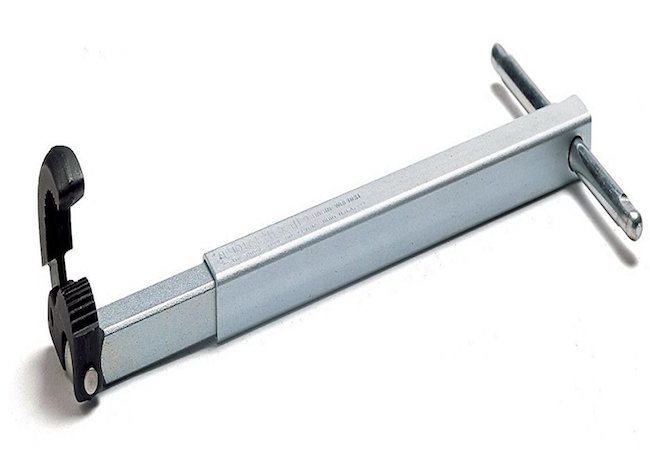
WRENCH TYPE: Basin Wrench
Wedging your body in the small cramped space beneath a sink while trying to install or disconnect water supply lines isn’t anyone’s idea of fun, but a basin wrench can make the daunting task a whole lot more comfortable—and save your back in the process. A basin wrench acts as an extension bar, allowing you to reach upward in the small space behind the sink and tighten or loosen the nuts that connect the water supply lines to the faucet. Basin wrenches may vary in design, but once the jaws of the wrench head are secure on the nut, you simply turn the wrench handle from the bottom to tighten or loosen the nut.
Best For: Attaching and removing connecting nuts on the water supply lines of a standard sink. Looking to make short work of replacing a faucet? check out the long reach (adjustable from 10 to 17 inches), adjustable jaws, and easy-to-use perpendicular T-type handle on the RIGID Model 1017 Basin Wrench ($32.72 from Amazon).
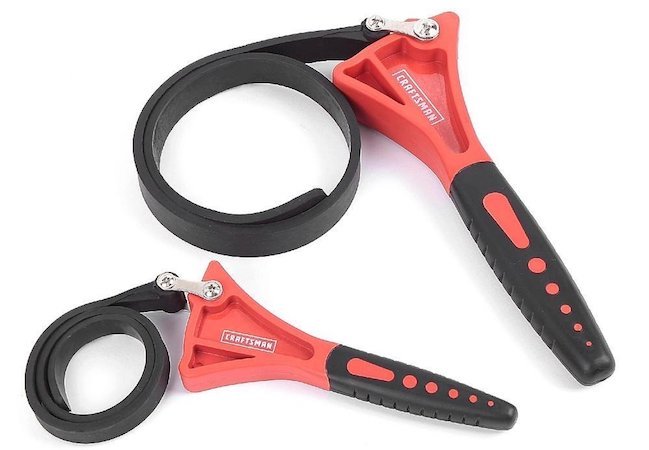
WRENCH TYPE: Strap Wrench
Not all wrenches are intended for use on small nuts and bolts. Strap wrenches exert torque force on larger cylindrical items, such as oil filters, large connecting pipe nuts, and even stuck-on jar lids! By wrapping the wrench strap (which is often made of rubber) around the item tightly to create a secure grip, you can then move the strap wrench handle to twist the item loose.
Best For: Removing round oil filters or large pipe connectors. While designs on the market vary, all strap wrenches work on the same gripping principle. For everyday use, try the Craftsman 2-Piece Rubber Strap Wrench Set, which comes with two sizes of strap wrench: a small tool for cylindrical items up to 4 inches in diameter and a larger option for those up to 6 3/8-inches ($17.18 from Amazon).

